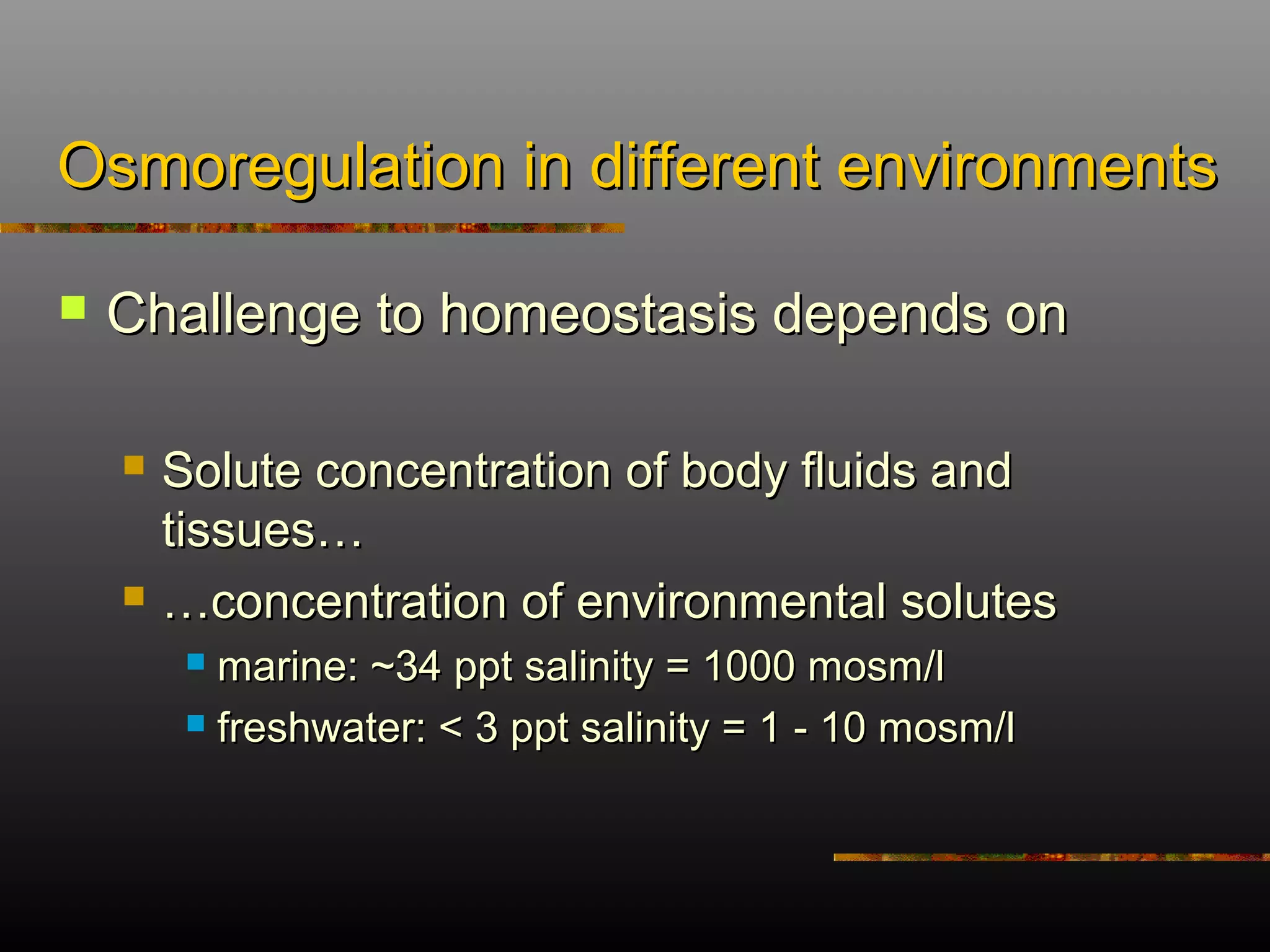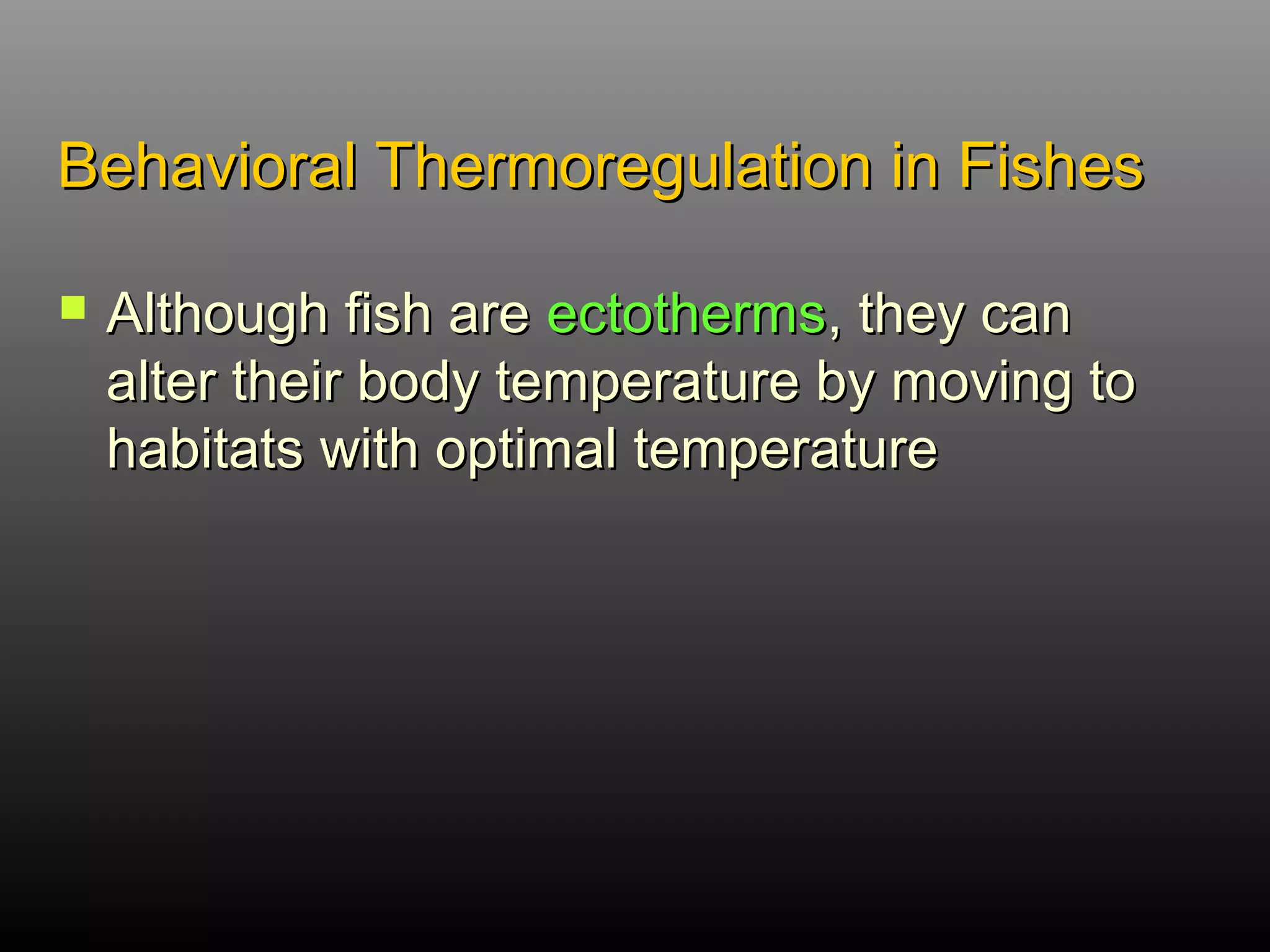This document provides an overview of homeostasis in fishes. It discusses four main topics: osmoregulation, endocrine regulation, thermal regulation, and the immune response. For osmoregulation, it describes the four main strategies fishes use to regulate their solute and water concentrations in different environments. It also discusses the roles of gills, kidneys, drinking, and ion exchange in maintaining homeostasis. For endocrine regulation, it outlines the major endocrine tissues like the pituitary gland, thyroid gland, and gonads, and the hormones they produce. It notes fishes use behavior to regulate temperature within their tolerance ranges. Finally, it introduces the non-specific and specific components of the immune system that help protect fishes












































